Mountain Bike Neck Protection
There is an ongoing debate about whether we should be wearing mountain bike neck protection. They became popular for professional downhill racers a few years ago. But, less of these riders wear it now. There are a few riders that continue to do so, such as Danny Hart. Some riders complained that mountain bike neck protection slowed them down (not Danny Hart though).
The use of neck braces has also declined on the trails. Even in Morzine, where riders can get pretty sendy, you don’t see them as often.
However, the fact that you have found this post means that you are still interested in mountain bike neck protection. There are a lot of reasons riders wear any kind of protection. It may be because it gives confidence, it may be due to lack of confidence, or it may be down to protecting weak or injured parts of your body. Whatever, your reason if it makes you happier on the trails, surely this is a good thing.
Mountain Bike Neck Protection Explained
Mountain bike neck protection is designed to stop excessive forward, backward and sideways movement of your head and neck. They are also designed to reduce the compression on your spine.
It originates from the motorbike world and is actually quite a sad story. In the early 2000s South African doctor and motorbike rider, Chris Leatt witnessed the death of a rider while at a race track. He then decided that he wanted to protect his son and other riders from neck injuries. So he started to develop a neck brace that would protect motorcyclists. It took a few years to develop and to be accepted by riders. But, when it began to grow in popularity, other companies started to develop their own, before the technology trickled on to mountain biking.
Mountain bike neck braces are essentially a reinforced collar. They are made from plastic or carbon fibre and are padded. They fit over your head and rest on your chest and back or shoulders.
When you crash, your neck brace limits your head movement. It does this in to help prevent injury to the neck. It dissipates the force from the impact.
You can wear mountain bike neck protection on its own (with a full-face helmet) or with body armour.
When choosing mountain bike neck protection, you need to consider a few things.
- Support type – Back and chest or shoulder. This is just a matter of preference, as they both offer similar protection.
- Size
- Weight
Limitations of Mountain Bike Neck Protection
As with any type of mountain bike protection, you will find limitations. Their effectiveness will always depend on the kind of crash you have. No mountain bike neck protection will protect you if you land directly on the top of your head. This is because it would have to restrict head movement completely, and that would make riding impossible.
Although neck braces are designed to offer a balance between comfort and protection, your movement is going to be restricted somewhat.
Some mountain bikers that don’t believe we should wear neck braces suggest that they increase the likelihood of collar bone injuries in low-level crashes. However, some suggest that that is preferable to more significant injuries from bigger crashes. It is worth mentioning that more modern mountain bike neck protection is designed to break before your bones break. This is similar to a crumple zone in a car.
Should you buy Mountain Bike Neck Protection?
If you are just riding trails, even with some exciting downhill and jumps, it probably isn’t worth it (unless you have some kind of medical condition). But, if you are racing downhill, free riding or taking on massive jumps, you may want to consider it.
Neck Protection Buyer's Guide
Support
There are two different types of mountain bike neck protection:
- Braces that use front and rear struts that rest on the chest and back for support.
- Braces that rest on the shoulders (but still use a padded support for the spine).
The neck braces with the struts are the most common. The rear struts are often designed to break off in the event of an accident. This is one of the ways that shock is dissipated away from your bones (you can buy replacements).
Fit
Most manufacturers of mountain bike neck protection make neck braces in different sizes. You should check the manufacturer’s website for sizing guides. But, they are sized similar to clothing, e.g. S/M or L/XL.
The collars are split, with a hinge on one side and a clip on the other so you can get the neck brace on and off. You will find that many mountain bike neck braces offer some adjustability. This is, so it fits properly and gives the best comfort possible. A lot of mountain, i.e. neck braces come with an (optional) harness system. This is so you can strap them under your armpits for extra stability.
Materials
Mountain bike neck protection at the lower end of the market will be made from reinforced plastic. If you want some carbon fibre goodness, you will have to pay more money. Both materials will give you the same amount of protection, but the lighter carbon fibre will be nicer to wear on long days. Another thing to consider when buying mountain bike neck protection is the quality of the padding. Ideally, you want breathable microbial padding, that you can take off to wash it.
Mountain Bike Neck Protection Recommendations
Here are the best options for mountain bike neck protection available right now. I could have made this list very long; however, you will find yourself going for one of these anyway. This is because they are the most popular and best neck braces on the market.
Leatt DBX 5.5
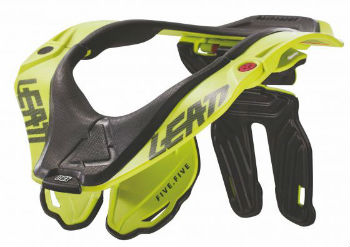
The Leatt DBX 5.5 is designed for both comfort and protection. It is very adjustable, making it suitable for all riders. It has something called Alternative Load Path Technology (ALPT®). This directs crash forces away from your helmet towards your body. This means that the force bypasses your neck.
The Leatt DBX 5.5 has a collarbone cut-out. This keeps itself and your helmet away from your more fragile bones during a crash. Its rear strut’s also snap off, so you don’t get excessive pressure on your back.
Pros
- More adjustable than the DBX 3.5
- Good freedom of movement
- Nice to wear
Cons
- More pricey than the 3.5, but it is a higher end neck brace
Verdict
A high end neck brace that offers excellent protection and comfort. It is very adjustable, allowing you to get the perfect fit in seconds.
Alpinestars Tech 2
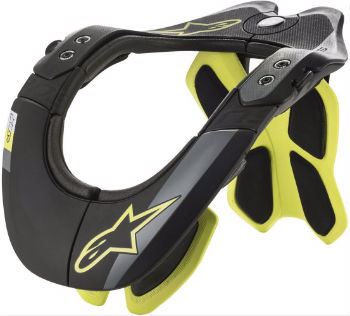
Alpinestars are another brand that originated in the motorbike world. They have used their expertise to create the Bionic Neck Support (BNS) Tech-2. This mountain bike neck protection incorporates bio-organic engineering design. This essentially means it has been designed with ergonomics in mind. Its rear stabiliser dissipates energy from crashes by sending them across the back and shoulders and away from your spine. The construction of this neck brace is designed to give it good contact with your helmet during a crash. To make sure it caters for different helmet sizes, it is extra wide. It has a quick-release locking system to make it easy to get on and off. The padding is compressed EVA foam to ensure comfort and protection.
Pros
- Slim and compact
- Good for compression injuries (from landing on top of your head
- Lightweight
- Breaks down easily to fit in your bag and for ease of access for paramedics
Cons
- Reports of slight movement over technical rooty sections, but nothing to worry about
Features
- Constructed from an advanced, high-performance fibre polymer compound
- Lightweight rear and chest padding and updated chinplate design.
- Structural integrity and frame strength against heavy impact energies during a crash.
- Ultra-lightweight performance and comfort while riding.
- Less weight than its predecessors.
- Resilience to low temperatures, below 0°C.
Verdict
A nice lightweight alternative to the Leatt DBX 3.5
What do you think?
Do you wear mountain bike neck protection? If so, why and which of these neck braces take your fancy?

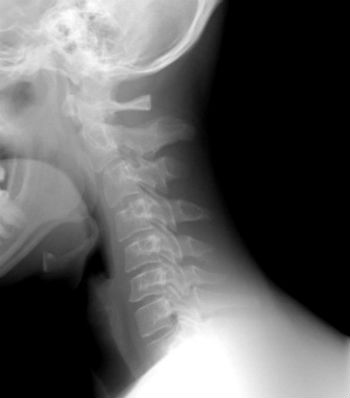
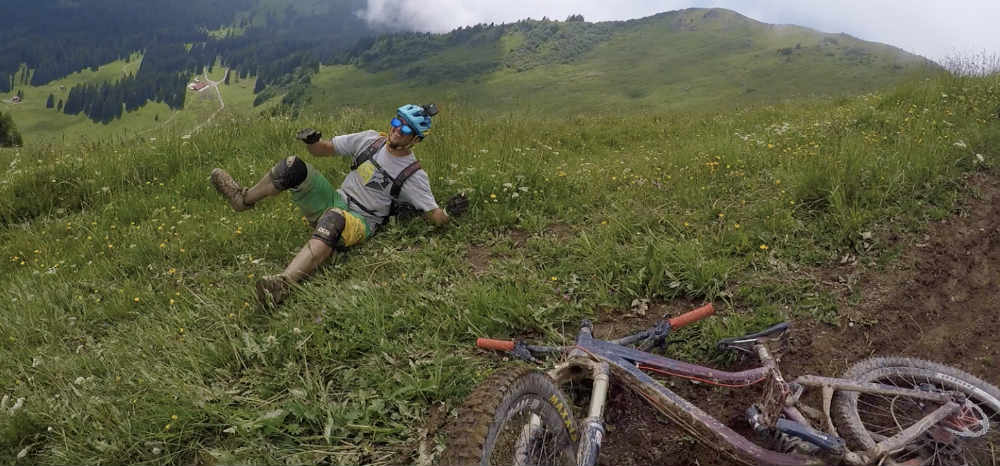
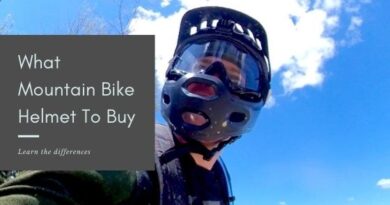
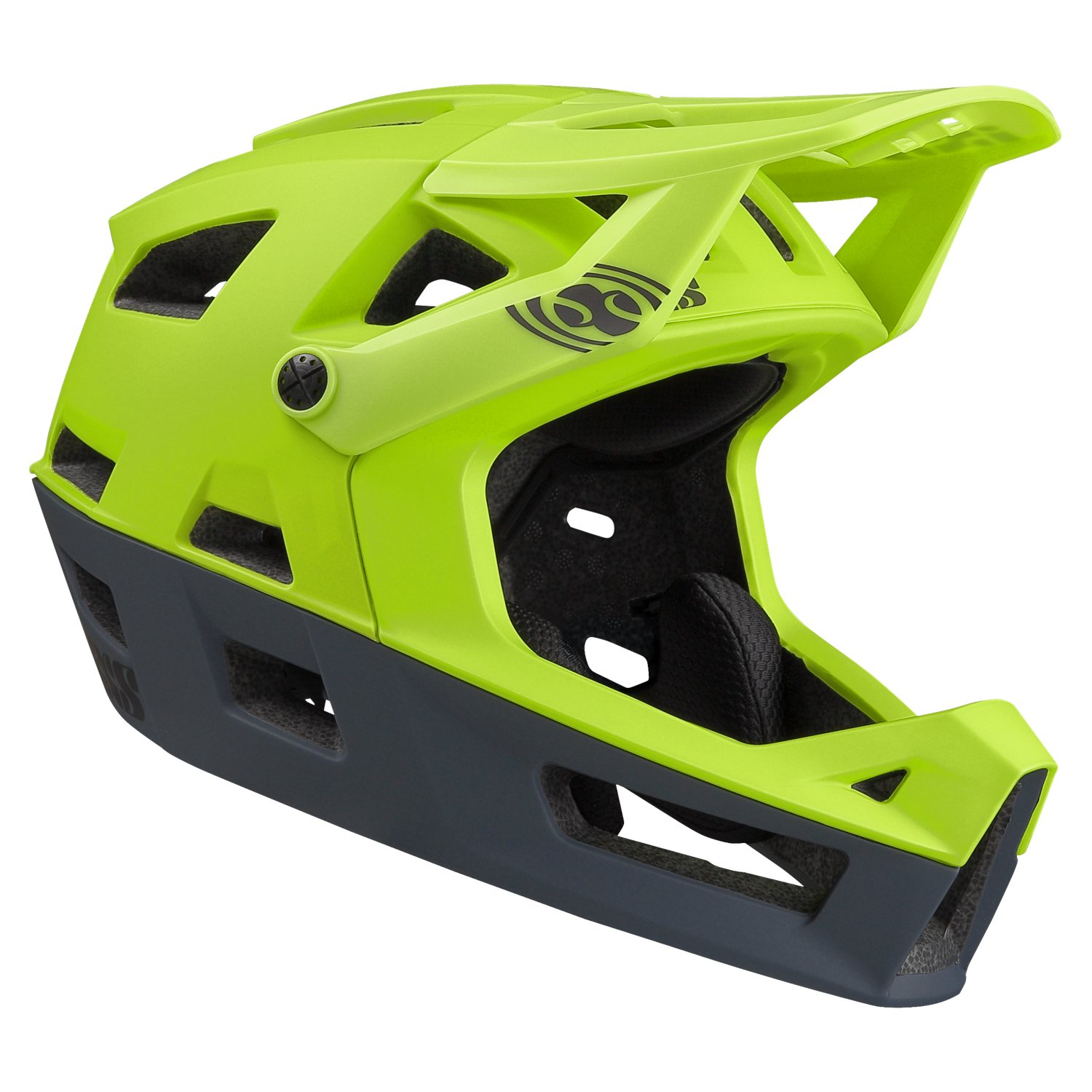
s. it must be very protected because I do not know what is going on in the curves … but you need to have protective equipment for the pile of gloves walking in the mountains is very dangerous. it must be very protected because I do not know what is going on in the curves … but you need to have protective equipment for the pile of gloves walking in the mountains is very dangerous.
Hi Armando,
Thanks for this.
Nice Review.
Clearly the neck brace is there to protect the neck in the event of an accident. though No brace cannot entirely prevent injuries, i guessed but regardless of the manufacturer or specific design they are all intended to reduce the likelihood of severe neck injuries in the event of a crash. So, Those who don’t buy in to the idea of braces will point to the lack of
clear empirical data to establish the level of protection braces can offer. And that’s a fair point
Hi Bibian,
Thanks for your comment. Not everyone gets on with wearing mountain bike neck protection, but for some it is invaluable.
Pingback: Is Mountain Biking Good Exercise? |